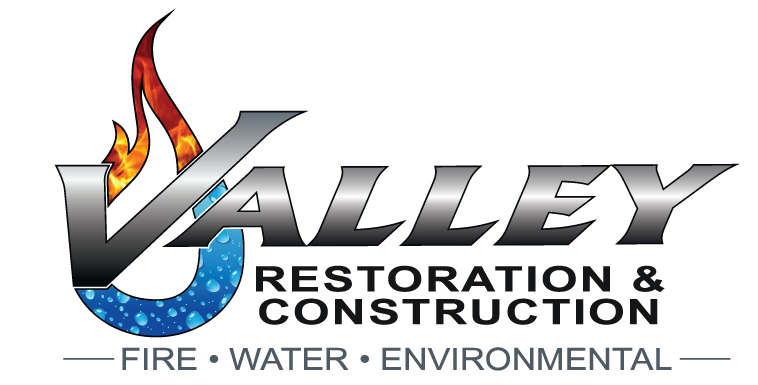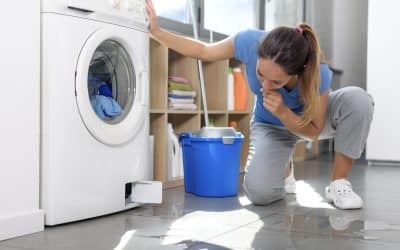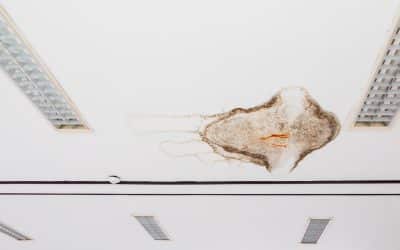Are You Dealing with a Restoration Emergency?
We’re Your Water Damage Experts
Do you have damaged residential or commercial property from flooding or plumbing issues? Roof leaks, ceiling leaks, and other types of water damage are responsible for billions of dollars in yearly property repairs for homeowners and business managers like you. Don’t let this happen to your family or business — let Valley Restoration and Construction help instead.
Valley Restoration has been Western Colorado’s go-to water damage cleanup and restoration source since 2014. Our IICRC-certified technicians are trained to discover the source of your water damage and prepare a game plan to mitigate damage and restore your home or business to pre-damage conditions.
Regardless of the extent of your water damage, you can call us. We will extract the water, dry the entire area, then develop a restoration game plan to repair your home or business.
Types of Water Damage
How Does Water Damage Happen?
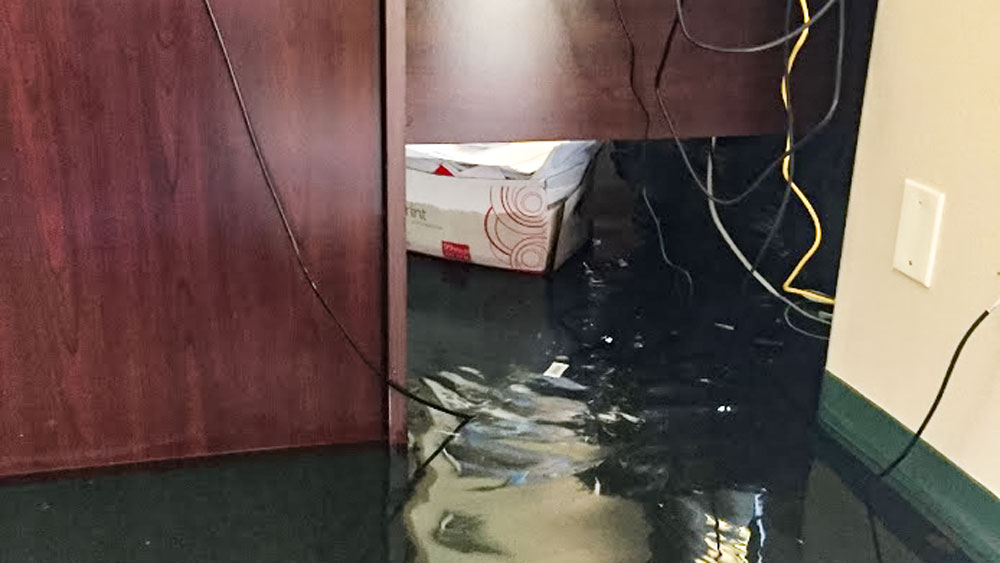
Water damage comes in many forms. Water heaters, faulty plumbing, and broken pipes are common causes of water damage inside your home.
Water Heaters
Water heaters have a lifespan; as they age, they may start to corrode and rust, leading to leaks or a complete tank rupture. When this happens, a significant amount of water can flood the area around the water heater, potentially damaging floors, walls, and any nearby items.
Faulty Plumbing
Faulty plumbing can also lead to water damage. Leaky joints, worn-out seals, or cracked pipes can go unnoticed for some time. This can cause long-term damage to the areas around the leak, including mold and mildew. In severe cases, faulty plumbing can lead to significant pipe bursts that cause immediate and extensive water damage.
Broken Pipes
Broken pipes can result in immediate, severe water damage. A pipe can break due to freezing temperatures, corrosion, or physical damage. Older homes are more susceptible to these forms of water damage, especially during the cold winter months here in Colorado, when pipes are most likely to burst. Water can quickly flood the area when a pipe breaks, damaging floors, walls, and personal belongings.
Also, storms and heavy rains can flood homes through the roof, windows, or doors. Water can seep through the basement or crawlspace if it builds up outside.
Storms and Heavy Rains
When storms and heavy rains occur, the ground can become saturated, reducing its ability to absorb water. When the soil’s absorption capacity is exceeded, water starts to pool on the surface, leading to basement and crawl space flooding, especially in low-lying areas along the Gunnison River, Tomichi Creek, and Uncompahgre River. Also, regions located at the base of the San Juan Mountains can quickly flood as stormwater runoff, or snowmelt makes its way down the mountain.
Urban Areas
Urban areas within the city limits of Montrose, Ridgway, Gunnison, and Delta are also prone to flooding during storms and heavy rains due to the prevalence of impervious surfaces, such as concrete and asphalt, which prevent water from being absorbed into the ground. This backup increases surface runoff, quickly overwhelming stormwater drainage systems and causing flash floods.
Windows and Doors
Windows and doors can serve as entry points for water, potentially causing significant damage to a home. Even a tiny breach in the sealing or caulking around windows and doors can allow rainwater to seep inside, leading to water stains, peeling paint, and over time, even structural damage due to rotting wood. Strong winds, often accompanying storms, can exacerbate this issue by driving rain against windows and doors with force, increasing the likelihood of water intrusion.
If your washing machine or dishwasher malfunctions, it can cause leaks and floods.
Dishwashers
For dishwashers, potential issues include faulty valves, loose or damaged hoses, and worn-out seals. If the water inlet valve fails, it can cause the dishwasher to overflow. Similarly, water can leak out if the hose that connects the dishwasher to the water supply line becomes loose or develops a crack. Additionally, the seals that keep water inside the dishwasher can wear out over time, leading to moisture escaping from the appliance.
Washing Machines
Washing machines, on the other hand, can cause water damage. The hoses connecting the washing machine to the water supply are often a point of failure. Over time, these hoses can crack or burst, causing water to leak or flood the area. Furthermore, faulty pumps or drum seals can leak water from the machine.
Finally, if your home was ravaged by fire and water was used to put it out, you will need water mitigation to extract the water from the building.
Water Saturation
Firefighters use high-pressure hoses that quickly release a large amount of water to combat the fire. This water can saturate walls, ceilings, floors, and personal belongings, leading to potential water damage and mold growth if not promptly addressed.
Physical Damage
The force of the water from the hoses can also cause physical damage. High-pressure water can break windows, damage drywall, and move or destroy personal belongings.
Need Help with Water Damage?
You’d be surprised by how many different water emergencies our crews have faced. Regardless of the cause or extent of your damage, Valley Restoration and Construction are ready and willing to help.
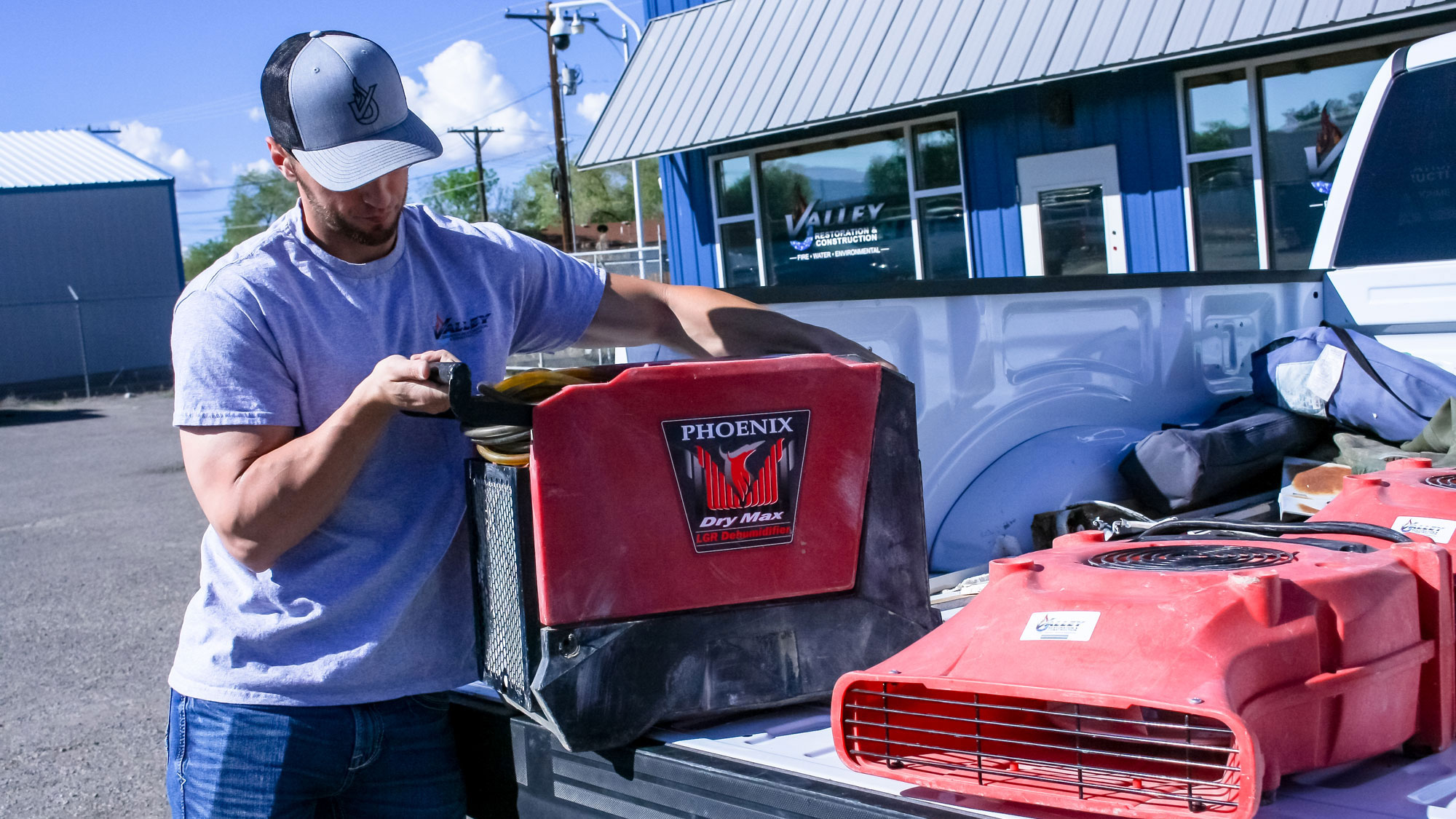
Water Mitigation
Water mitigation involves all the necessary steps to stop further damage. Water mitigation contains water damage and salvages anything that is restorable, thus reducing the impact of the water on your home and property.
Until we contain the damage, reconstruction can’t start. Once water mitigation is complete, water restoration can begin if the building’s structural and other substantial parts require reconstruction and rebuilding.
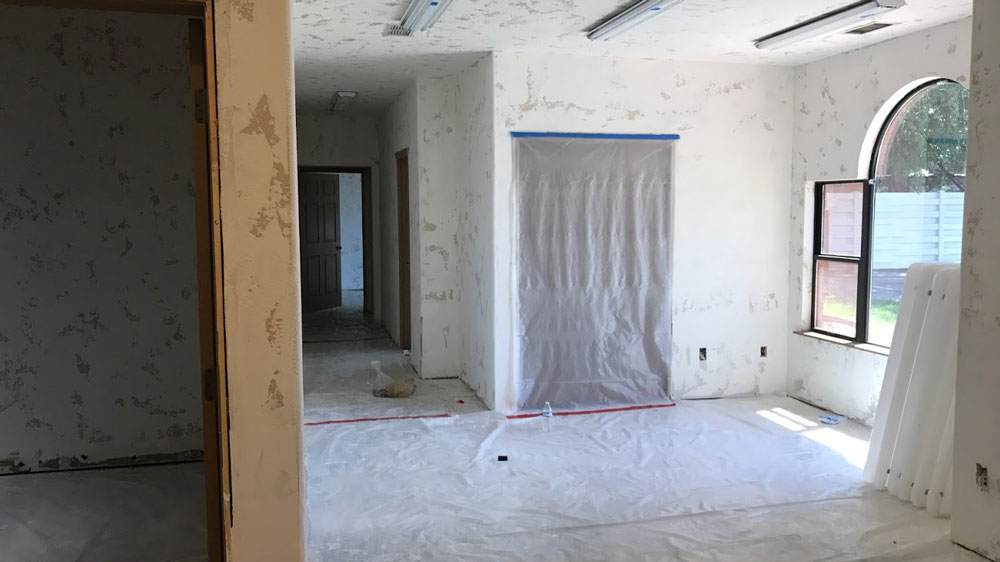
Water Damage Restoration
Once water mitigation is complete, we start with water restoration. We reconstruct and rebuild any walls, ceilings, floors, and structural components damaged by water.
Using the same specialists for water mitigation and restoration is best. You will get a better price and have the peace of mind that all aspects of mitigation and restoration will be tackled from start to end by a certified professional like Valley Restoration and Construction.
Why Call Valley Restoration & Construction?
Anytime water causes physical damage to your home or business, it can be frustrating and challenging to deal with. However, Valley Restoration and Construction is here to help you through every step of the water damage restoration process.
Certified Water Damage Restoration Experts
Our technicians specialize in residential and commercial water damage restoration. They are trained to dry out your property in record time and complete necessary repairs and renovations to restore your home or business to pre-flood conditions.
“Locally-Owned” Means We Care About You
We are a genuinely locally-owned and operated business. Our professionals live in Montrose and the surrounding communities we serve. At Valley Restoration and Construction, we care about helping you.
A Proven Record of Quality Work
Since 2014, we’ve consistently provided high-quality work. Customer testimonials highlight our reputation and ability to deliver on our restoration and construction promises. We will ensure the job gets done correctly and exceed your expectations regardless of the project size.
Available Anytime
We know that restoration emergencies occur at unpredictable times. That’s why we’re available to take your call 24/7. When flooding emergencies happen, we will be there for you.
Learn More About Water Damage & Restoration
How to Salvage Wooden Furniture After Water Damage
Floods, broken pipes, or any other kind of water damage can be devastating. Thankfully, you can salvage and restore a lot of your wooden furniture with the help of mitigation and restoration professionals like Valley Restoration and Construction. This guide will help...
5 Home Appliances That May Cause Water Damage
We often talk about storms, rain, snow, and other external threats to your home’s integrity. However, water damage often comes from within—specifically, from appliances that use water. Today's life is so good compared to the past. Refrigerators keep our food fresh and...
What Is Water-Damaged Drywall? How Can You Repair It?
Drywall is used for walls and ceilings and is a great way to build internal walls as well as design features. Its resilience and versatility make it the perfect building material, which is why it has largely displaced lath and plaster walls. Drywall is made of gypsum...
FAQs
Common Water Damage Questions
What is water damage mitigation?
Water mitigation is the cleaning, removing damaged materials and drying out of a property affected by water damage. It involves removing excess water, drying out the affected areas, cleaning and sanitizing the space. Water damage mitigation does not include restoring the property to pre-flood conditions, and insurance companies settle claims in two separate categories based on the mitigation and restoration services.
What is water damage restoration?
Water damage restoration is the repairing, and restoring a property affected by water damage. It involves making necessary repairs or, in many cases, replacing damaged materials to return the property to its pre-damaged condition. Water damage restoration cannot happen until after the mitigation work is done, and insurance companies typically set different budgets for water damage restoration that do not include the mitigation process, which is billed separately.
What are the common causes of water damage?
Common causes of water damage include:
- Burst or leaking pipes
- Plumbing issues and fixture failures
- Sewer backups
- Roof leaks and damage
- Flooding from heavy rain or natural disasters
- Appliance malfunctions (e.g., washing machines, dishwashers)
- HVAC system issues
What are the different categories and classes of water damage?
Categories of water damage refer to the source and contamination level of the water:
- Category 1: Clean water from a sanitary source (e.g., broken supply line)
- Category 2: Gray water with some contamination (e.g., washing machine overflow)
- Category 3: Black water with significant contamination (e.g., sewage backup)
Classes of water damage indicate the extent and absorption rate of the water:
- Class 1: Least severe, minimal water absorption
- Class 2: Significant water absorption, affecting carpets and walls
- Class 3: Most severe water saturation affecting ceilings, walls, and flooring
- Class 4: Specialty drying situations involving materials with low permeability
How long does it take to dry out a property after water damage?
Drying time can vary depending on the severity of the damage, the materials affected, and the methods used. It generally takes 3-5 days to dry a property correctly, but it may take longer for more extensive damage.
How long does it take to dry out a property after water damage?
Drying time can vary depending on the severity of the damage, the materials affected, and the methods used. It generally takes 3-5 days to dry a property correctly, but it may take longer for more extensive damage.
What are the potential health risks associated with water damage?
Water damage can lead to mold and mildew growth, which can cause allergic reactions and respiratory issues. Category 2 and 3 water damage may also introduce harmful bacteria and pathogens, leading to illness or infection.
How can I prevent mold growth after water damage?
To prevent mold growth, start the drying and restoration as soon as possible. Remove excess water, use dehumidifiers and fans to dry the area, and clean and sanitize affected surfaces. Keep humidity levels below 60% to discourage mold growth.
How much does water damage restoration typically cost?
The water damage restoration cost can vary widely depending on the extent of the damage, the materials affected, and the required restoration work. On average, homeowners can expect to spend between $2,500 and $8,000, but more severe cases can exceed $10,000.
Will my homeowner's insurance cover water damage restoration?
Homeowners’ insurance policies typically cover water damage restoration if the cause is sudden and accidental. However, adjusters may deny coverage if the damage is due to negligence or lack of maintenance. Flood damage is typically not covered by standard homeowner’s insurance and requires separate flood insurance.
What should I look for in a water damage restoration company?
When choosing a water damage restoration company, look for:
- Licensing, certification, and insurance
- Experience and expertise in handling water damage situations
- 24/7 emergency response availability
- Positive customer reviews and references
- Comprehensive services, including drying, cleaning, and restoration
What are the steps involved in the water damage restoration process?
The water damage restoration process typically involves the following steps:
- Assessment and inspection of the damage
- Water extraction and removal
- Drying and dehumidification
- Cleaning and sanitizing
- Repair and restoration of damaged materials
- Final review and verification of a successful restoration
How long will it take my property to dry after water damage?
The timeframe depends on how much water damage occurred, how big the damaged area is, and how quickly you call Valley Restoration and Construction to mitigate the damage.
Other factors also affect the time it takes our technicians to start the mitigation and drying process, such as how much water leaked into the house or office, whether it was clear, gray, or dark water, and whether structural damage to the building.
We can contain a small, localized leak, mitigate it, and dry out the area within 3 to 4 days. Larger areas may require more. If water restoration is necessary, it will take longer.
Can I enter my home immediately after the water damage?
You should wait before you enter your home after water damage. You need experts to check the structural integrity of the building to make sure that nothing can cause injury due to something falling on you or failing because of rotting wood floors, unstable floors, or slippery steps.
Likewise, an electrician must confirm that you don’t risk getting electrocuted. You shouldn’t turn on any appliance, plug anything into an outlet, or use any electric or electronic devices until an electrician thoroughly checks your home or business.
